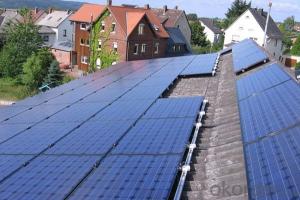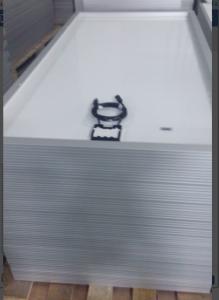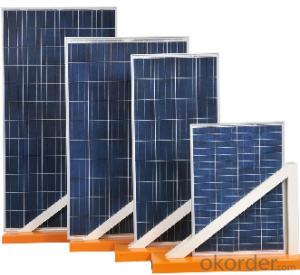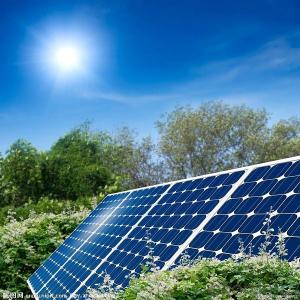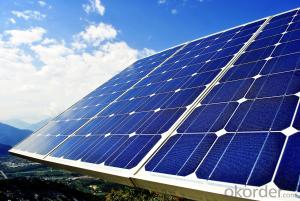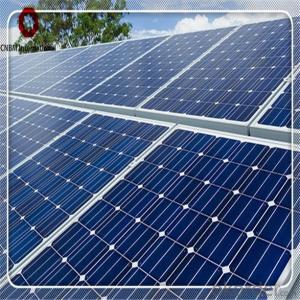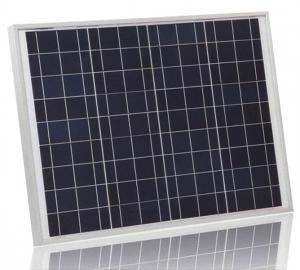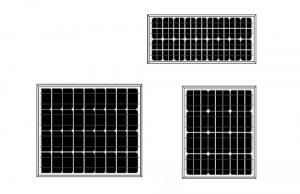48 Volt High Power 200W/27V Poly Solar Panel for Roof
- Loading Port:
- Tianjin
- Payment Terms:
- TT OR LC
- Min Order Qty:
- 100 watt
- Supply Capability:
- 10000 watt/month
OKorder Service Pledge
OKorder Financial Service
You Might Also Like
Specification

200W/27V solar panel/module in A grade polycrystalliine solar cell.
Cell: Motech brand imported from Taiwan.
Price: Negotiable.
Application: For on grid tie system.
Mechanical Characteristics:
Dimensions: 1482mm(L) x 992mm(W) x 40mm(H)
Weight: 18.3KG
Polycrystalline solar cells: 54 cells
Aluminum frame: High quality withstand strong wind and heavy snow, anti-corrosion.
Construction: Front: High-transmission 3.2mm tempered glass;
Encapsulate: EVA
TPT- COVEME Italy brand to ensure good quality.
Junction box: UL-certified
Module Warranty:
Warranty on material and workmanship: Five years
Guaranteed output of 90% after 10 years and 80% after 25 years.
| Performance | ||
| Rated Power[Pmax] | 200W | |
| Power Tolerance | ± 3% | |
| Nominal Voltage | 27V | |
| Design Life | 25 years | |
| Electrical Characteristics | ||
| Maximum Power [Pmax] | 200W± 5% | |
| Maximum Power Voltage [Vmp] | 26.91V± 3% | |
| Maximum Power Current [Imp] | 7.44A± 3% | |
| Short-Circuit Current [Isc] | 8.06A± 3% | |
| Open-Circuit Voltage [Voc] | 32.55V± 3% | |
| Current Temperature Coefficient | 0.08%/º C | |
| Voltage Temperature Coefficient | - 0.32%/º C | |
| Power Temperature Coefficient | -0.38%/º C | |
| Maximum System Voltage | 1000V | |
- Q: Can solar panels be installed on a landfill or waste management site?
- Yes, solar panels can be installed on a landfill or waste management site. In fact, these sites can provide suitable locations for solar panel installations due to their large open spaces and minimal shading. Additionally, repurposing landfill sites for solar energy generation helps to utilize otherwise unused land, reduces the environmental impact of waste management, and promotes the production of clean and renewable energy.
- Q: how much do you think it would cost for installation?i heard that solar panels can store electricity and any excess electricity gets sold back to the electric company. how much money can a home owner make from doing this?do you think solar panels are worth it?
- If you're in a sunny area, and the cost of electricity is high, solar panels can be worth it. But it's not a big moneymaker, it's something that pays back over long timeframes. We live in northern California, and our system is about break even, but that's because our electricity usage was low to begin with. If you want to see our system, look at the web page in my profile. Are panels worth it in your area? The only way to know for sure is to find a local installer in your phone book, and then ask for local references. If you can't find a local installer, that's a clue, and if they can't give you any references that are nearby, that's another clue. The panels don't actually store energy, the energy is sold back to the power company when what you produce is more than you consume, driving the meter backwards. Again, this is not a big moneymaker, and in fact, it may be impossible to make a profit, depending on your local laws.
- Q: When you get solar panels do you connect them to the grid?
- You okorder / as they provide very accurate free solar quotes and break down all the incentives you will be eligible to receive, your estimated annual savings, your payback period, projected IRR, and a cash flow analysis. They taught me everything I know about solar, and I must say they're a great starting point if you're curious about what solar energy is all about.
- Q: If you were to be asked to write a material(s) report on either -solar panelsor -aircraft fuselageWhich would you choose?well i was asked to choose between these two,so i guess that if i choose what the majority wouldn't, i might just score a little bit higher,what do you think?if you are the lecturer you would want something different right?
- If you pick the fuselage, look up friction stir welding. It's a low temp, solid state method of joining Al. I have taken a few classes (undergrad and grad) from Dr. Reynolds. This stuff is cool!
- Q: I want to buy a solar panel from my house and I want to know how much it costs, what I have to buy and everything I need to know
- If okorder / for the solar panel design, Do it yourself DIY cheap and best guides which you can download right away. Using all the information, it will cost you less than $200 for building and complete installation of the solar panel in your house. This will cut your energy costs by atleast 50%. Many people are feeding the grid from the extra power they generate from renewable sources of energy like wind turbines and solar panels at home. So Good Luck!
- Q: What is the typical warranty period for solar panels?
- The typical warranty period for solar panels ranges from 20 to 25 years.
- Q: How do solar panels affect roof weight load?
- Solar panels can increase the weight load on a roof, as they require mounting brackets and additional equipment to be installed. However, modern solar panels are designed to be lightweight and are typically not heavy enough to cause any significant structural damage to the roof. It is important to consult with a professional to assess the roof's load-bearing capacity before installing solar panels.
- Q: hi everyone..i wanna do my major project on solar panels...so anyone kindly tell me the projects based on solar panels..
- I have done this in my project too and a solar panel, two wires, a circuit/project board, an LED light/a small fan,a switch and a solderer. Just solder the wires to the positive and negative parts of the panel, put the wires connected to the panel to the board put the LED's on the other side and the switch together with it shine light on the panel and the light/fan will work.(If it dosen't work, please DO NOT consult ME.)
- Q: That one costs money but looks like it might work. I don't really have the money for it but if it works then it would probably be worth it. Do homemade solar panels really work or is it just a gimmick? I'm really interested to see if anyone has actually tried this and to see what they say about it.Thanks
- Home made solar panels should work just as well. You can make some thrifty ones that don't cost thousands of dollars! And it will truly save you a lot of money in the long run and can even power your home, even after a storm when everyone elses power is out
Send your message to us
48 Volt High Power 200W/27V Poly Solar Panel for Roof
- Loading Port:
- Tianjin
- Payment Terms:
- TT OR LC
- Min Order Qty:
- 100 watt
- Supply Capability:
- 10000 watt/month
OKorder Service Pledge
OKorder Financial Service
Similar products
Hot products
Hot Searches
Related keywords
